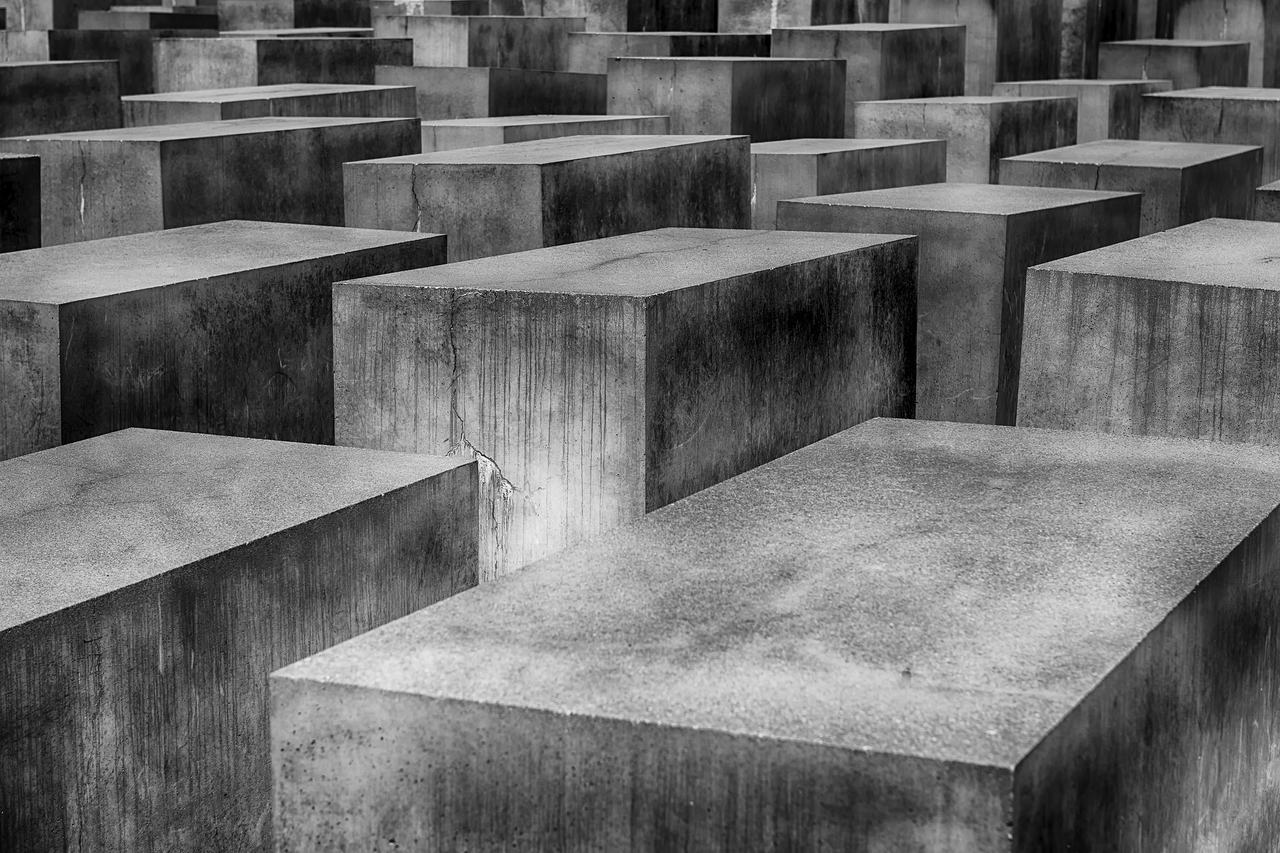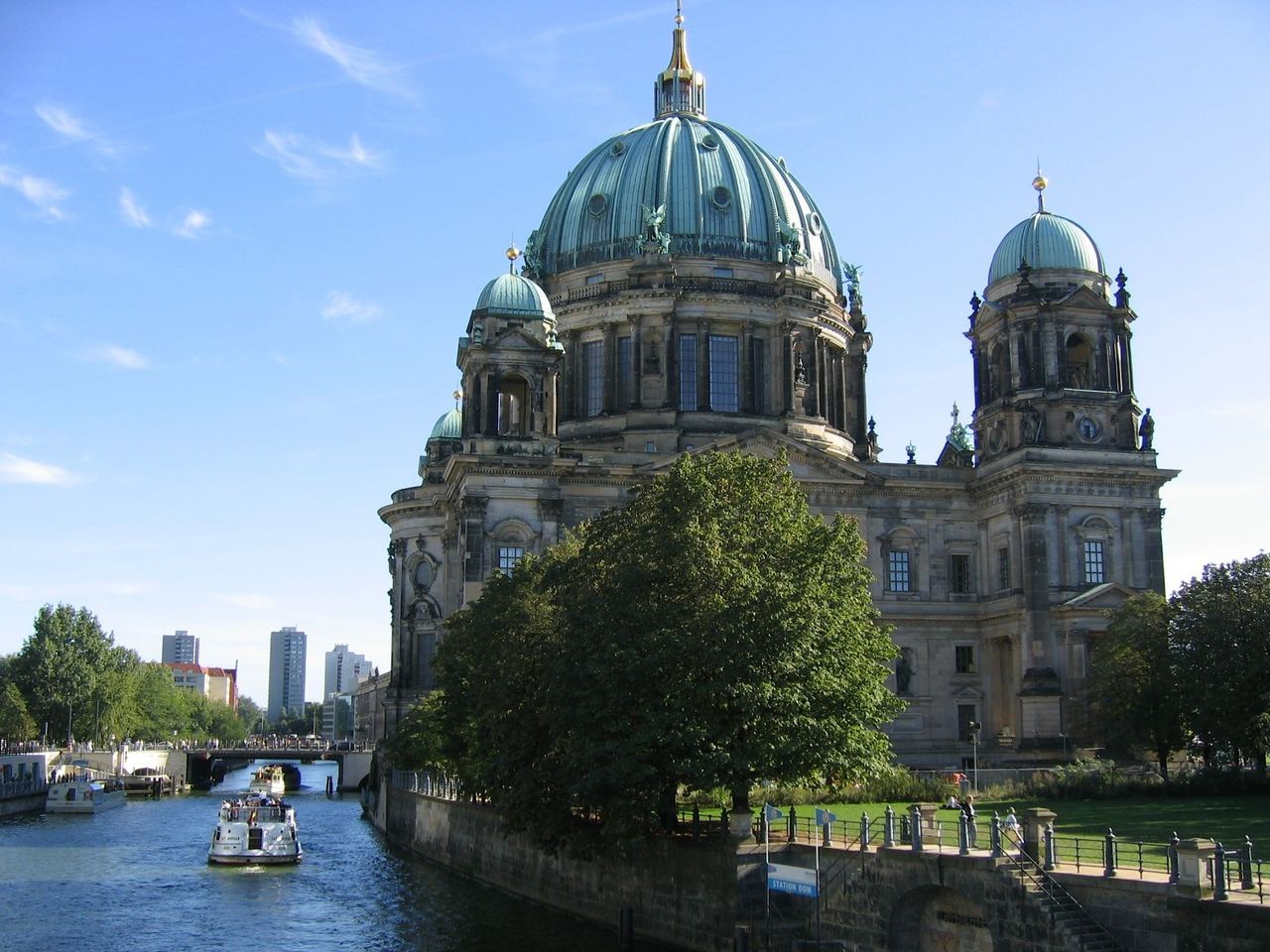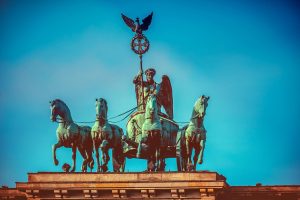With its numerous sights, museums and memorials, Berlin, the German capital acts as a magnet for keen history buffs from all over the world. Right from the Prussian empire, the gradual rise of nationalism under Hitler’s rule, the Second World War, the emergence of the Cold War followed by the fall of the Berlin Wall in 1989 and eventually the fall of the Iron Curtain, Berlin’s past draws even the not-so-enthusiastic visitors into its lure.
Tumble down Berlin’s turbulent history
On my first day in the city, I decided to keep it light with a walking tour. Following the swarm of people along Unten den Linden, a popular 1.5 km-long-boulevard in the centre of Berlin, I headed towards the iconic Brandenburg Gate.
With its imposing presence, this grand classical archway is the city’s foremost sight. Commissioned by King Frederick William II, it was built between 1788 and 1791, becoming a symbol of reunification with the fall of the Berlin Wall. Passing through the arch, I could see the historic German Parliament building with its glistening glass dome, only a stone’s throw away.
Next, I followed the guide through the maze-like Holocaust Memorial, feeling a chill go down my spine as 2,711 grey columns seemed to tower over me, casting long shadows with each step. We continued walking, only to pause at a very ordinary parking block which, to my shock, was built above Hitler’s bunker, where he is said to have met his end.

Holocaust memorial
Onward from this banal plot of land, I passed a short thick wall with protruding iron bars, barbed wire and huge gaps with missing cement chunks. Only when the guide explained did I realise this was the infamous Berlin Wall. Till then, I had always imagined it to be a terrifying tall structure that had blocked out life for almost three decades, dividing East and West Germany with contrasting political ideologies. Turned out, this Wall did all that and a lot more, shaping the course of our world.
Over 90 minutes, I had not only learnt a lot about Berlin and its turbulent history but also recognized its unwavering importance on the global stage.
Brandenburg Gate
Take a half day tour of Berlin – £17.65
Experience Berlin’s history on this half-day guided walking tour through the city’s Mitte district. Visit landmarks from the city’s Prussian, Imperial, Nazi, Cold War and modern eras. Stroll along the iconic Berlin Wall and follow Unter den Linden to the Brandenburg Gate. Then check out the rebuilt Reichstag and the Holocaust Memorial and hear the amazing stories of Cold War Berlin at Checkpoint Charlie. Includes a complimentary city map and guidebook.
Dive face-down into Berlin’s culinary scene
While the city of Berlin boasts a number of classy Michelin star restaurants such as Restaurant Facil and Tim Raue, my stomach craved its street food that makes Berlin a mecca for foodies.
I ended my walking tour at one such no-frills pit stop. Aptly named ‘Curry at the Wall’, it served traditional and vegan currywurst: a Berlin staple composed of sliced up German sausage, or wurst, doused with ketchup and a sprinkle of curry powder. Tangy, warm and served with a side of delicious fries, it made for an ideal snack on that autumn afternoon.
Another similar highlight from my time in the city was Mustafa’s Gemüse Kebap, a famed kiosk dishing out hearty meat and falafel kebabs with grilled veggies to locals and tourists till the early morning hours. Emerging from the metro station at Mehringdamm one night, I simply followed the tantalizing fragrance of sizzling meat and fresh bread to join a throng of more than 100 hungry people standing patiently in the queue on the sidewalk.
Known to have originated in Berlin in the 1970’s by one of the first Turkish immigrants in the country, the Döner Kebab is made with seasoned meats shaved from a vertical rotisserie, similar to the Greek Gyro or the Arab shawarma.
While the story of its origin remains highly contested, its staggering popularity in Berlin as well as the rest of the country is undeniable. As I dug into my döner, savouring the abundance of spices that filled my mouth, I looked around to make note of the demographics on that one single street corner. Party-goers, tourists, students, families, professionals and elderly couples were – like me – sporting satisfied expressions over stuffed faces. Amid hundreds of similar döner kiosks, Mustafa’s Gemüse Kebap had built itself a cult following.
Take Ethnic Eats tour from £76.77
Taste the best of East Berlin during this walking tour sampling the area’s history along with a mix of tasty ethnic eats and traditional German staples. Wander past this trendy area’s mix of hip galleries, communist-designed boulevards, kebab shops, boutique bakeries and German sausage sellers. A guide, all food samples, and bottled water are included. Explore art galleries, Soviet-era boulevards and street murals of East Berlin.
CHECK AVAILABILITY
Multiculturalism in Berlin
Home to the biggest Turkish population outside Turkey alongside many other nationalities, Germany and in particular Berlin is highly multi-cultural, contrasting even depending on which district one finds themselves in. As I explored the Friedrichshain-Kreuzberg and Neuköln districts, I fell in love with the vibe, graffiti-covered buildings, and pavement cafes serving traditional water pipes alongside thrift shops and trendy boutiques.
Known for their alternative lifestyle, these districts are home to some of the coolest projects in the city, such as the Markthalle Neun – a successful indoor food hall serving global street food under one roof –, urban gardening projects as well as the city’s legendary clubs like Berghain, Tresor and Watergate.
Strongly believing that the best way to explore is on foot, I spent hours walking the lively streets, exploring the weekly markets on the banks of Spree and stopping to take selfies at its many scenic bridges, including my personal favourite, the Oberbaum Bridge: a striking two-towered structure dating back to 1896.
From here, across the water, I could view the iconic 368-meter-tall Berlin TV Tower, knowing that right next to it was the Park Inn by Radisson Hotel, where I was staying for the weekend.
Located less than 4 km away in the bustling and crowded Alexanderplatz with its malls and department stores, I noted the distinct contrast among Berlin’s districts.
I also knew that continuing along the Spree to the west of the city, notable highlights such as the glossy shopping promenade Ku’damm and seven-floored luxury mall KaDeWe would await me, adding a strong sense of capitalism to that borough.
Berlin’s unique museum landscape
Before heading back to Berlin Mitte, I walked the entire length of the East Side Gallery, starting at the Oberbaum Bridge. At 1.3 km, it is, along with being the longest continuous section of the Berlin Wall also the longest open-air gallery in the world. This experience allowed me to view more than 100 works of art dating back to the fall of the Berlin Wall when 118 artists from all over the world were invited to showcase their work. Then and even now, the most recognisable grafitti has to be ‘Fraternal Kiss’ by Dmitri Vrubel that depicts a shared kiss between socialists leaders Leonid Brezhnev and Erich Honecker, reproduced from a photograph taken in 1979.
With so much to do and see, a rough itinerary comes handy and one vital stop on mine was Berlin’s historic Museum Island, a Unesco World Heritage Site comprising of five world-class museums sprawled over a large area in the very heart of the city. Housing some incredible artefacts and very unique in its location, the Museum Island was an absolute joy for me to explore.
I was left amazed by the 17-metre-high Market Gate of Miletus in the Pergamon Museum and the 3000-year-old bust of Nefertiti in the Neues Museum, rejoiced in viewing original works of art by Caspar David Friedrich, Auguste Rodin, Renoir and many others in the Alte Nationalgalerie (Old National Gallery) and savoured the classical simplicity of the Altes Museum (Old Museum), the first museum building to be built on the island in 1830.
After many hours spent indoors, I crossed the bridge to Monbijoupark at the northern tip of the island, across from the Bode Museum. Located on the banks of the Spree, it was a popular meeting spot for the locals but for me that day, it was an oasis of calm to enjoy the beautiful view, watch boats pass by and take a breather, knowing that the next day I was to depart Berlin and return to routine adult life.
At least, for those few moments, I felt like a Berliner.
FACT FILE:
STAY: Park Inn by Radisson Hotel has a central location.
TOURS: There are several tours, cultural, by bike, and foodie tours. Check them out here.


